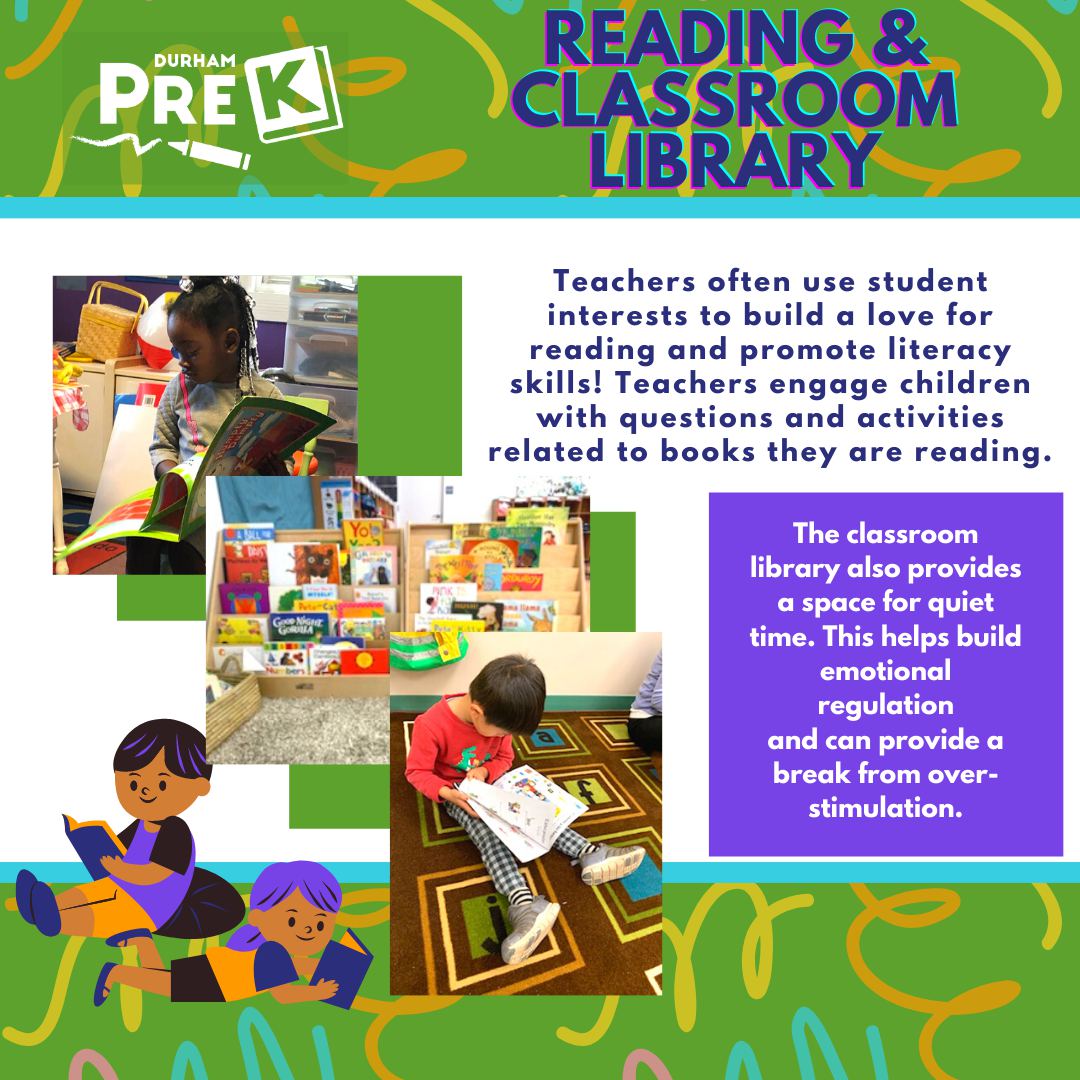 The classroom library center is another place in the classroom that allows children to build foundational skills for future academic learning and to explore their interests. Part of developing literacy skills is learning about books themselves, looking at the pictures, and creating their own words for the story.
The classroom library center is another place in the classroom that allows children to build foundational skills for future academic learning and to explore their interests. Part of developing literacy skills is learning about books themselves, looking at the pictures, and creating their own words for the story.
Once the children begin to learn how to read, they can browse the classroom library for books that interest them. Teachers often assess their students' interests and add or suggests books to them that match those interests.
Finally, this is an area that really allows children to have some quiet time. Quiet time can help with emotion regulation and can provide a break from over-stimulation.
To read about how children can learn about racial and ethnic differences and the importance of diverse books, read our blog post here.
More Types of Play in Pre-K
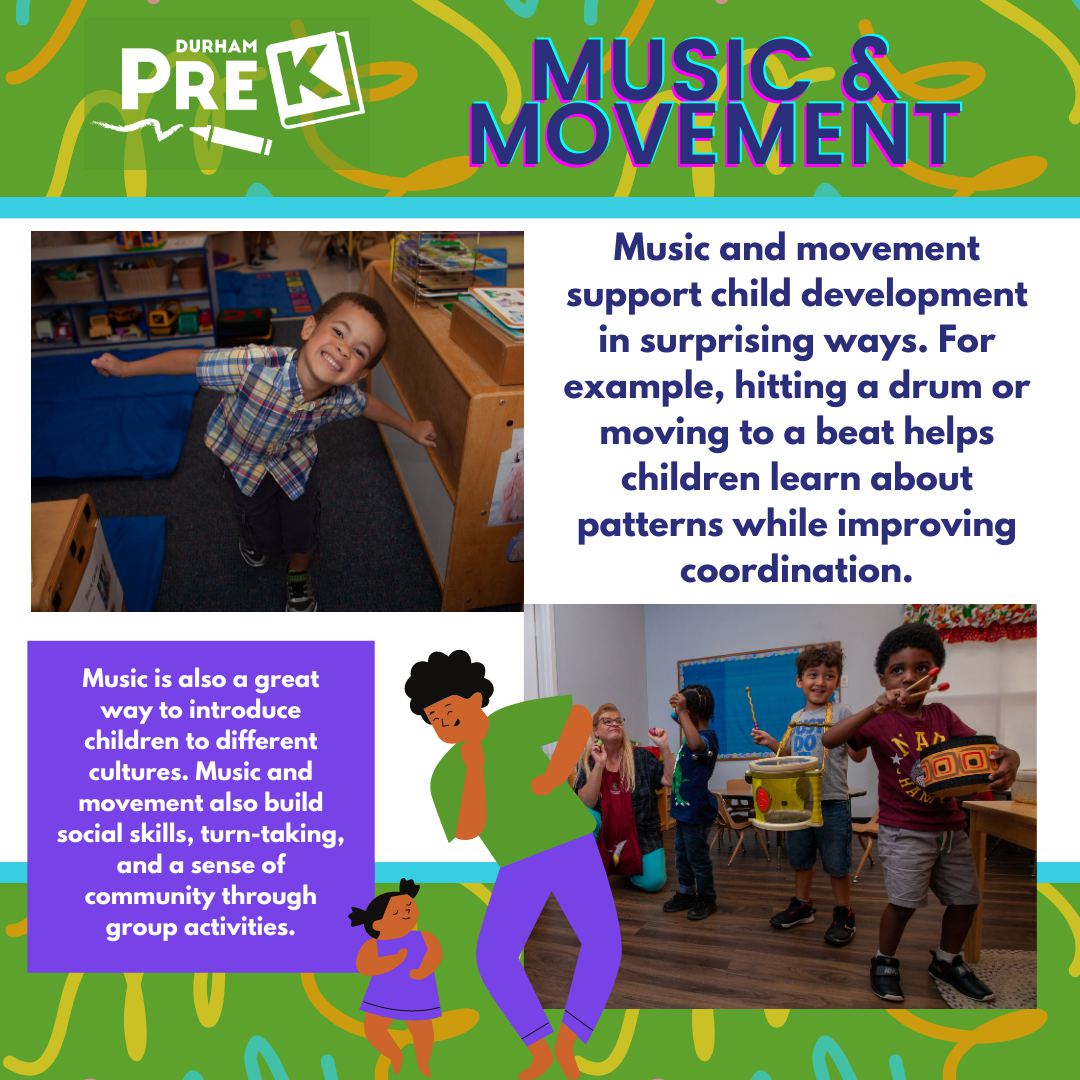 Music and movement activities can teach children many different kinds of skills. They can learn about patterns by hitting the drum or shaking an egg shaker to a certain beat, which also includes practicing coordination for big and small movements. Music and movement can also teach strategies for handling their emotions and solving problems. Teachers often incorporate taking deep breaths and short rhymes that explain what to do when they feel mad or sad.
Music and movement activities can teach children many different kinds of skills. They can learn about patterns by hitting the drum or shaking an egg shaker to a certain beat, which also includes practicing coordination for big and small movements. Music and movement can also teach strategies for handling their emotions and solving problems. Teachers often incorporate taking deep breaths and short rhymes that explain what to do when they feel mad or sad.
Finally, this center also helps develop social skills, like turn-taking, following directions, and self-expression.
More Types of Play in Pre-K
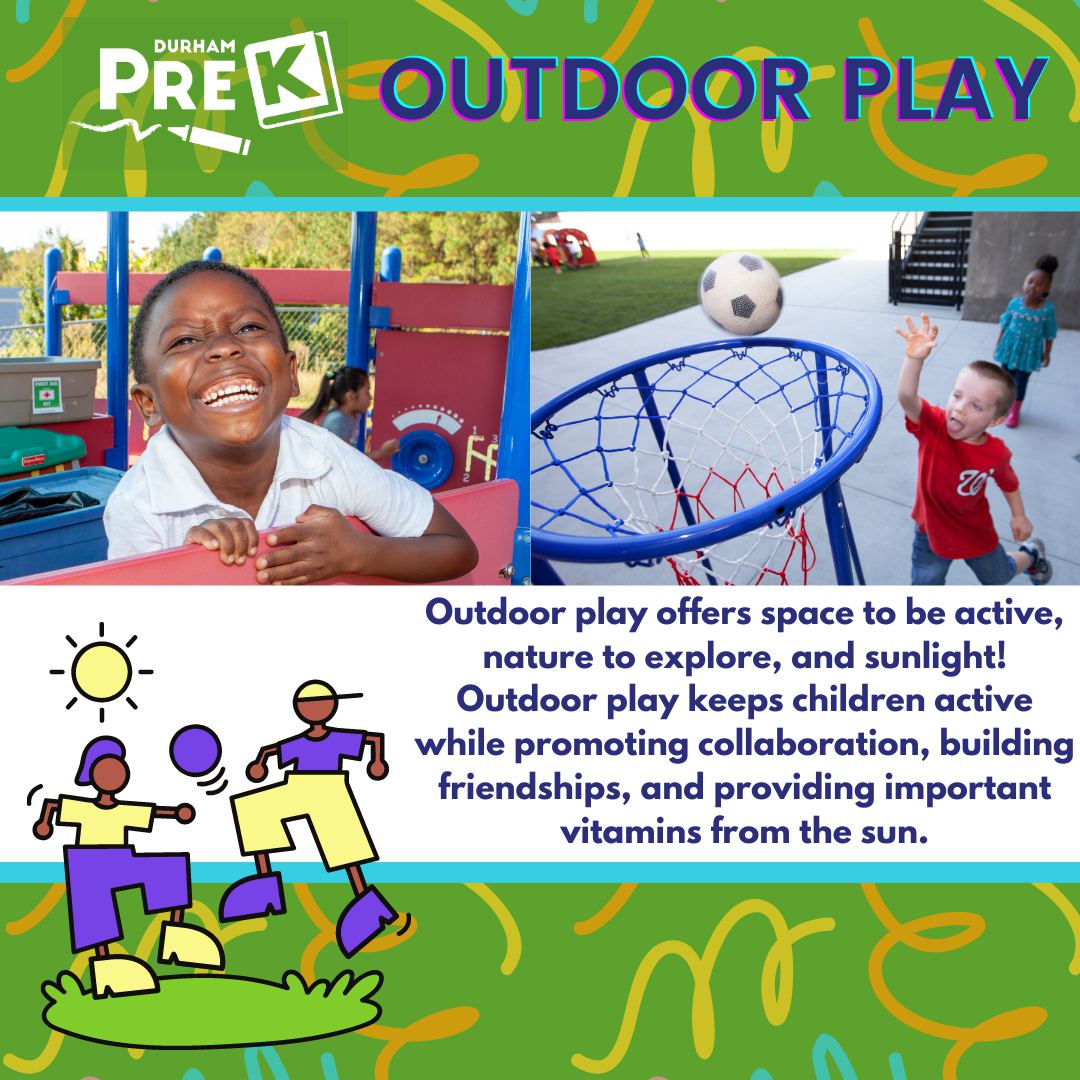
Outdoor Play is very important to the growth and development of our children. It offers opportunities for our children to be active and develop social skills. For example, learning to take turns on the swings, making up rules to a game and following them as a group, teamwork, and building friendships. It also offers opportunities for learning about nature, the environment, and the world around us.
North Carolina State Law requires that children engage in Outdoor Play (Gross Motor) everyday as long as the weather permits.
More Types of Play in Pre-K
Children typically do one of two things at the art station: open-ended or teacher-guided art. Both encourage imagination, coordination, and expression through art.
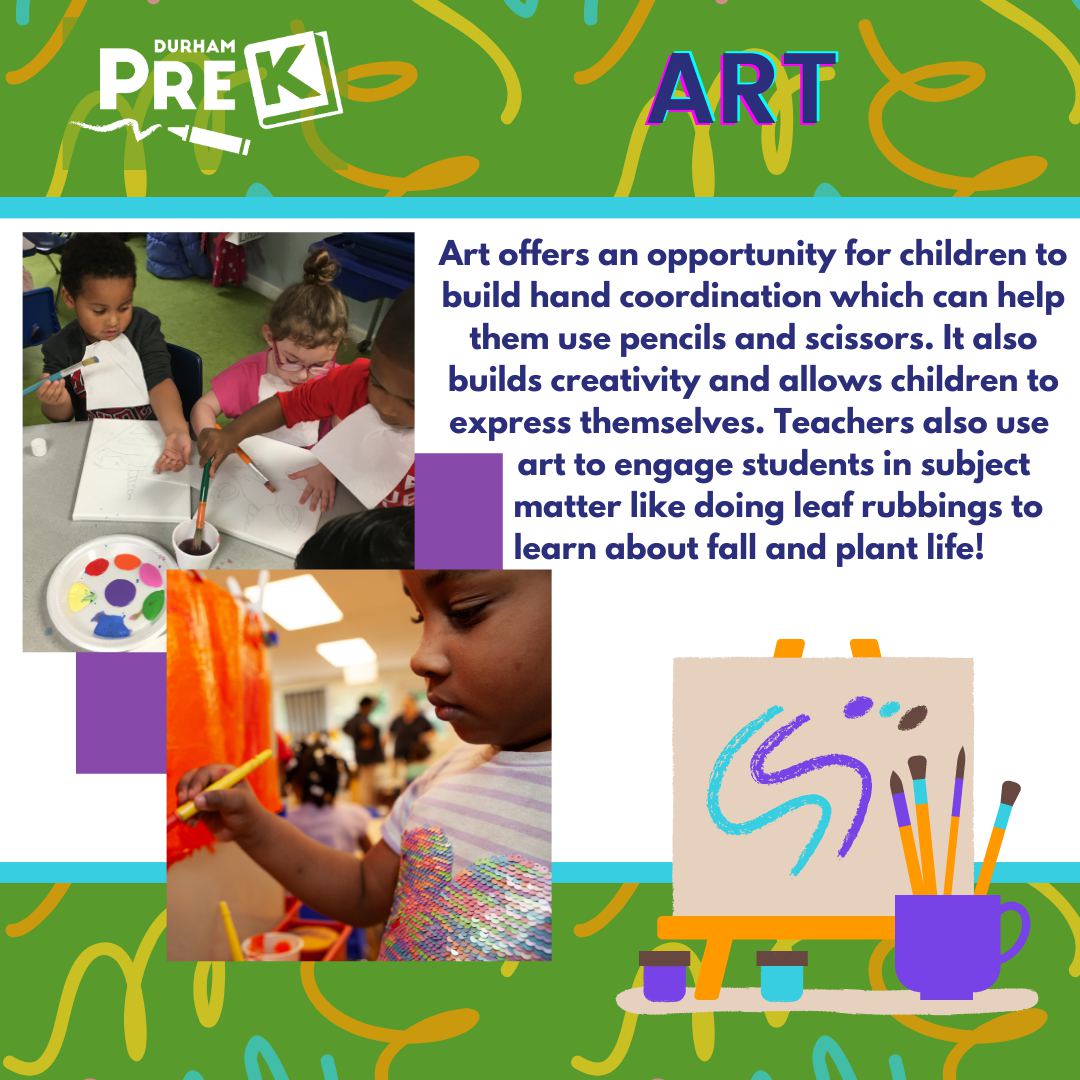
Open-Ended Art
Open-ended art allows children to choose their materials and create something entirely from their imagination. Allowing children to choose how to express themselves encourages them to explore their own interests, practice coordination, and be creative. Using items like paper towel rolls, card board boxes, q-tips, and more can also encourage creativity by teaching children how to find new uses for ordinary things.
Teacher-Guided Art
Teacher-guided art is often related to a story read in class or part of a larger lesson. For example, when your child's class reads "10 Black Dots" by Donald Crews, the teacher may lead them in an art project creating their own picture from 10 black dots. This type of activity still helps develop coordination and creativity skills, but also includes lessons on following instructions, making connections to a book or lesson, and sharing materials with classmates.
More Types of Play in Pre-K
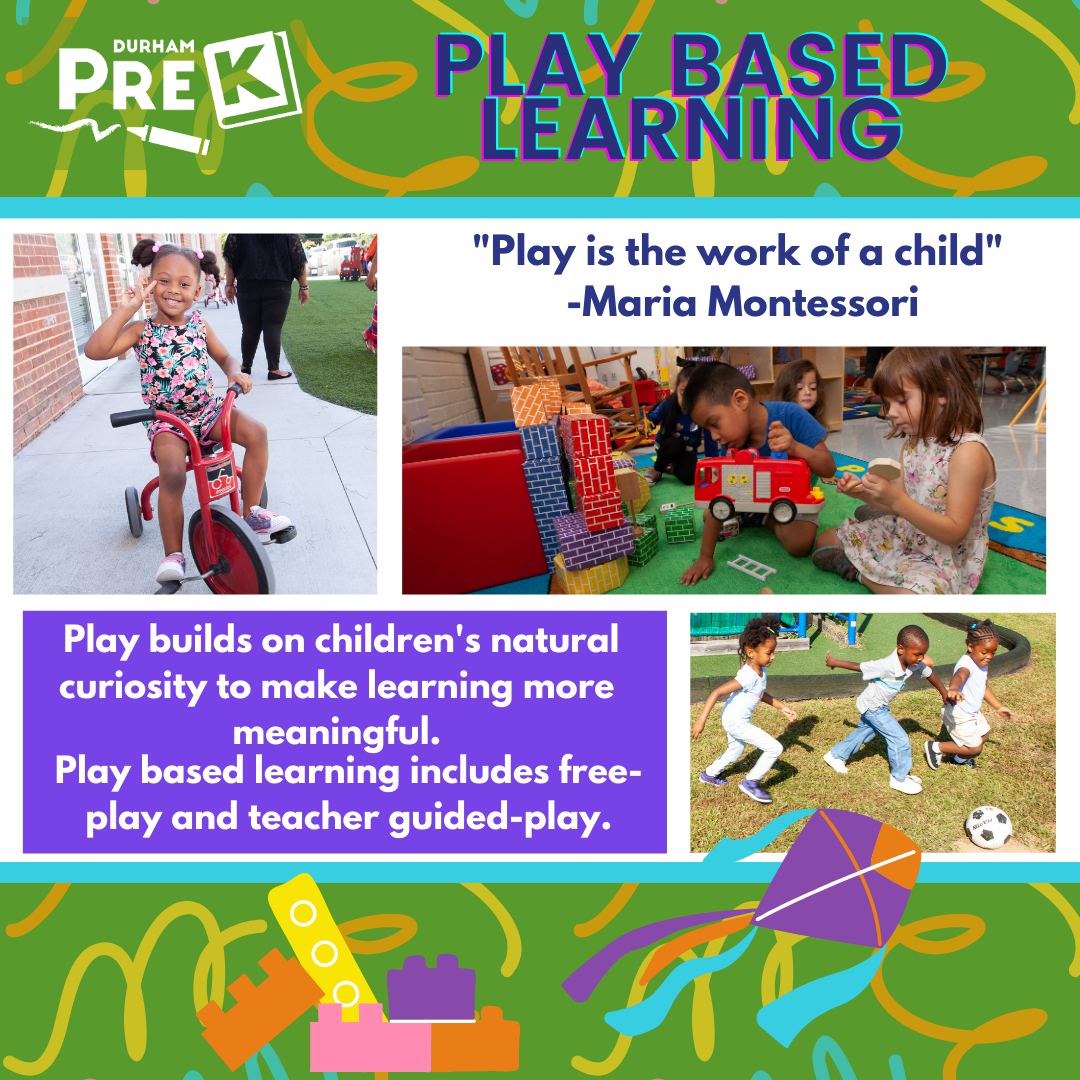 Just as children learn to talk and walk, they learn to play! Below you will find the stages of play from Head Start's Family Engagement materials. Children typically start by playing alone and focused on their own interests, and then gradually begin to play more collaboratively with other children.
Just as children learn to talk and walk, they learn to play! Below you will find the stages of play from Head Start's Family Engagement materials. Children typically start by playing alone and focused on their own interests, and then gradually begin to play more collaboratively with other children.
Plays by self
- Child plays alone based on own interests. This is encouraged at all ages, but the amount of time spent playing alone should decrease as children get older.
Passive Onlooker
- Child is interested in other children's play, but does not join in with the others
- Often includes observation and asking questions
Plays alongside another child
- Child will play while sitting with another child, but the two are not interacting or participating in the same type of play or playing with the same item. This is separate from playing alone because the children are still observing each other and may talk while playing in their separate ways.
Plays in a group with similar toys
- Children play in the same area with the same toys, but are not working together with shared rules and goals
- Example: playing with blocks on the same carpet mat while talking about interacting, but building towers independently
Plays with a group with goals and roles
- Children play with same items while interacting, sharing rules and goals of play, and taking turns/solving problems together.
Types of Play in Pre-K
- Outdoor Play
- Sensory Table
- Art
- Music & Movement
- Reading & Classroom Library
- Dramatic Play
- Blocks & Puzzles
Sources
https://www.encourageplay.com/blog/social-stages-of-play
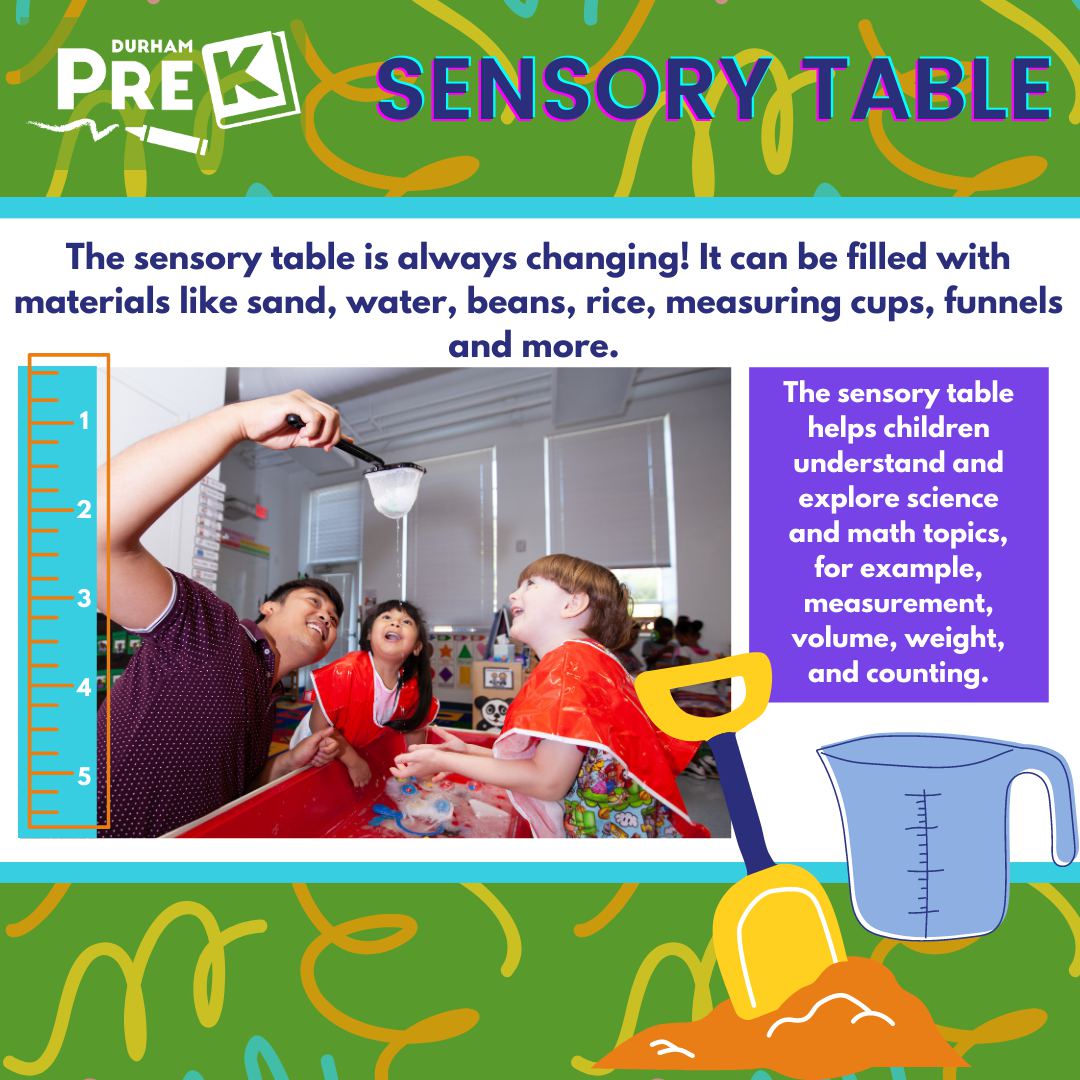 Sensory tables allow children to explore new ideas and use their senses to make observations. They can feel the sand and water at the table, they can see how water and sand move to fill the container they're in, and they can hear what it sounds like when water falls into different sized containers.
Sensory tables allow children to explore new ideas and use their senses to make observations. They can feel the sand and water at the table, they can see how water and sand move to fill the container they're in, and they can hear what it sounds like when water falls into different sized containers.
These tables also help students learn the foundations for math and science concepts, such as volume, density, measurement, and states of matter. When using this table with a friend or teacher, they can also build their vocabulary and turn-taking skills. In addition to these academic and social skills, children also practice their coordination buy pouring sand and water into narrow containers.
More Types of Play in Pre-K
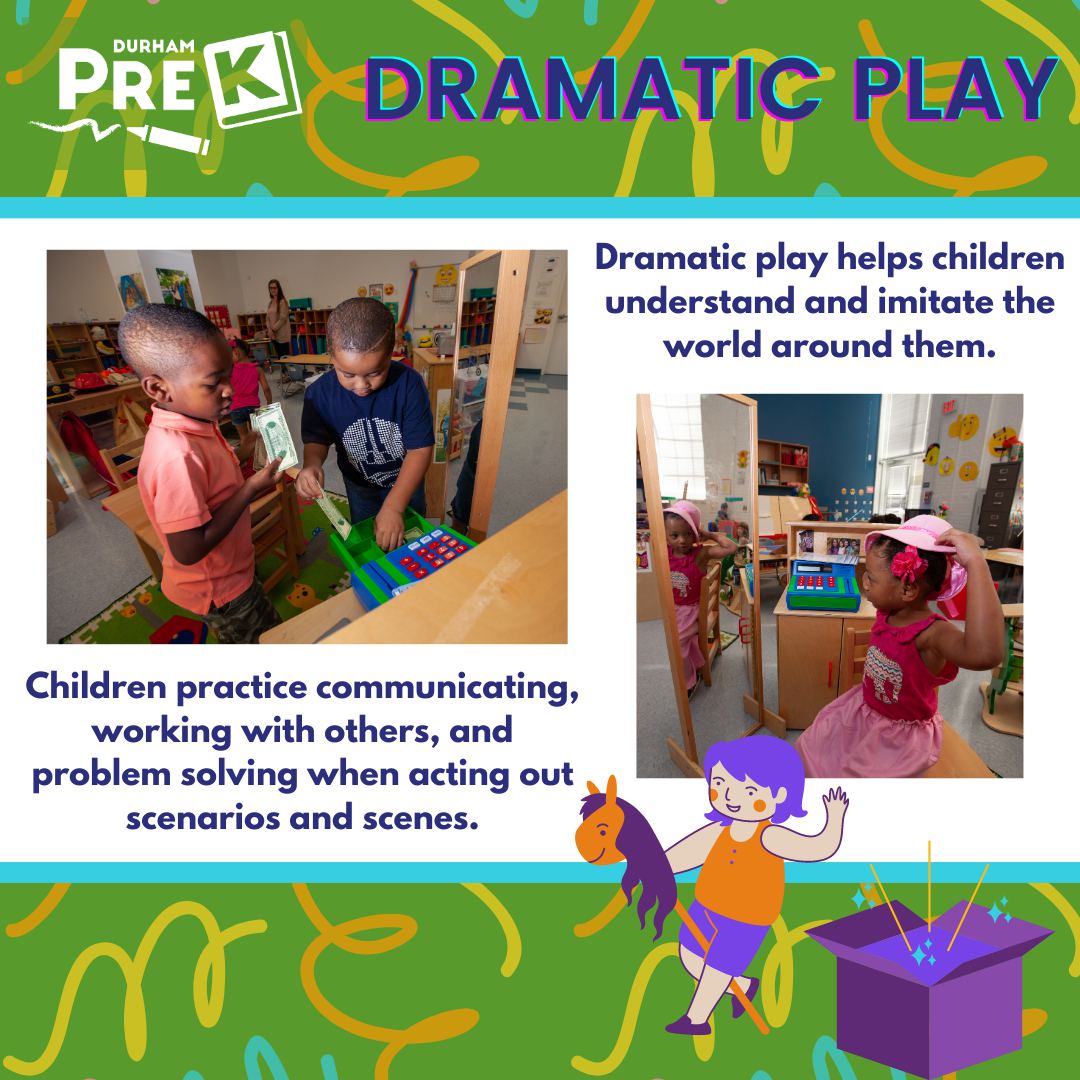 Playing with dress up clothes and props enhances imagination, verbal skills, vocabulary, social skills, and more. Children are creating scenes in their minds and describing their ideas to their teacher and peers. This gives them the opportunity to practice verbal expression while their peers listen and practice comprehension.
Playing with dress up clothes and props enhances imagination, verbal skills, vocabulary, social skills, and more. Children are creating scenes in their minds and describing their ideas to their teacher and peers. This gives them the opportunity to practice verbal expression while their peers listen and practice comprehension.
This sets the foundation for literacy in elementary school and beyond. When a teacher is present, there are even more opportunities for learning because the teacher can guide the conversation to learn new vocabulary words and encourage turn-taking.
More Types of Play in Pre-K